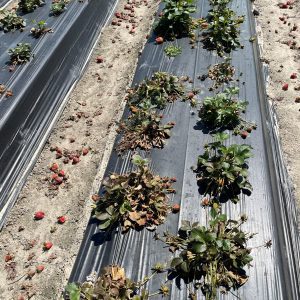
Alabama Extension provides tips to strawberry growers looking to protect their crops this year against Pestalotia, a leaf spot and fruit rot disease caused by the fungus Neopestalotiopsis.
The disease that has recently wreaked havoc on strawberry producers in Florida and Georgia is a threat to Alabama strawberries. It affects the plant roots, crown, leaves and fruit and eventually leads to the plant’s complete collapse. It will also cause lesions on the leaves that are like those created by other diseases.
One of the main management strategies that Alabama growers can utilize is to inspect plants as soon as they arrive for planting. The disease can be present on any plant material that comes from nurseries. It is important to purchase plants that are certified disease free. If any symptoms are present, consult your local Extension agent.
It is also key to choose the most effective control methods. Switch and Thiram provide the most effectiveness against Pestalotia in chemical trials. But if Switch is used, plant as early as possible to avoid stunting the plant’s growth. If planting later, avoid applying Switch.
Other tips include maintaining a fungicide spray program throughout the season; avoid harvesting when plants are wet; if the disease is found in a field, consider planting in another site.
If you suspect you have Pestalotia leaf spot and fruit rot, contact your Extension office and submit a sample as soon as possible to your local plant diagnostic lab: http://offices.aces.edu/plantlabauburn/.









